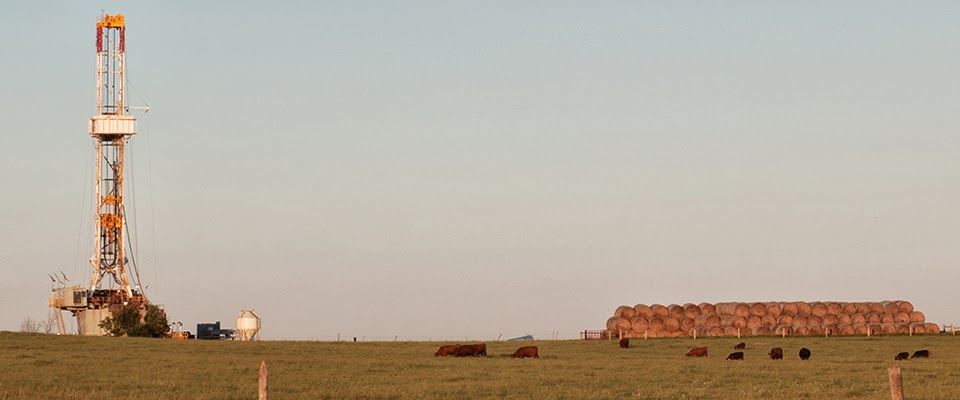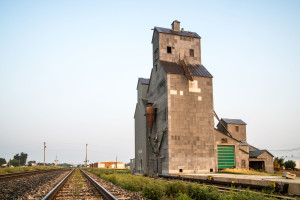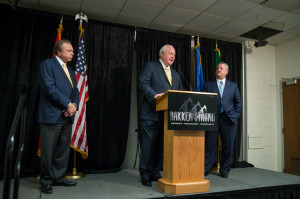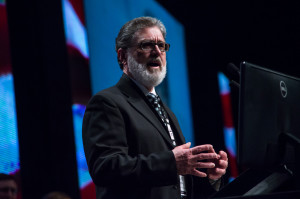

The relationship between agriculture and energy has been around since the dawn of industry, if not mankind. However it’s how that relationship coexists that determines how it is defined. Sometimes they work together, sometimes they are in competition. To say one industry is more powerful than the other is like trying to choose your favorite child. Basic human essentials of food, water and shelter require the collaboration of agricultural and energy. Thus their foundational role or importance in life becomes a cyclical back and forth, or give and take.
This particular go round appears to be something special and North Dakota has a front row seat to one of the largest mergers or collaborations in industry today. For the past century to century and a half, agriculture has dominated the world’s consciousness with a quest to feed your family and the planet. This journey created the infrastructure we are currently living in today. A journey that was known as, or perhaps still is known as, the Agrarian Age. Schools were set up on a nine month calendar due to laws of seed and sun, not laws of summer vacation.
Today, there appears to be a shift in perception as energy’s positioning in the global consciousness is becoming the lead horse in this constant back and forth between social and economic development. During the genesis of the current energy industry, agriculture was reliant on rural land with oxen and plow, so the social engineering warranted agriculture as the lead horse. This created a situation from the beginning where oil and gas had to understand how to work with another major industry and its private land owners.

“The relationship with ag and the oil and gas industry is one that goes back to the founding of our industry. That’s why we call our departments that work with the surface owners our land departments,” Whiting Petroleum’s CEO Jim Volker said. “And we honor those relationships because, without them, we don’t have a place to drill. So, it’s very important for us to be good stewards of the land, air and water, as well as the oil and gas resource.”
The comprehensive relationship created roads, schools, millionaires, new technologies and built communities. This relationship coexisted for generations as policy and social philosophy was created around an agrarian state of mind, while the energy sector contributed, benefited and gave back. It was win-win.
“First of all, those two are the premiere industries of the state and are very important here and we recognize that, especially when working with land owners,” said Harold Hamm , CEO of Continental Resources. “The ecopad development has been tremendous and the lateral development minimizes surface usage and has worked very well.
Ecopads are just one example of how oil and gas has transformed their business model to satisfy that relationship while improving their day-to-day operations.

“There is a lot of overlap between ag and energy,” Lynn Helms director, North Dakota Department of Minerals, explained. “First of all, out in the oil patch there is the surface. We have to use a certain amount of surface that’s been traditionally used for ag purposes to extract the energy. There have been efforts and there are ongoing efforts to reduce that footprint. We in the Bakken really are the first people to shrink it to less than one percent of the surface being used for energy extraction to multi-well pads and the long reach horizontal and everything else the industry is doing. That’s one of the intersections.”
From ethanol to land to the rail, this acknowledgement is more common today as the two are showing increased signs of sharing resources and intersecting in the marketplace. Intersections which often create compromises and collaboration.
“We are doing a lot of things, whether it is the ecopads that Harold has just talked about, or the natural gas processing plants and the pipelines,” Volker said. “Whiting has about $600 million dollars tied up in the plants and pipelines we put in here to capture that natural gas resource. It is our responsibility to see that it works well for the surface owners, the mineral interest owners, who in this state, fortunately, are many private individuals who are farmers and ranchers. It also has to work well for the state as a whole so we maintain that quality of life. We all want to see that quality of life if not maintained, improved.”
As the country’s quest for a better quality of life continues through economic and social development, energy policies are beginning to have a higher priority in rural policy and technology development. Some people perceive it is a quest to power the planet, while others see it as pure capitalism. One thing is for certain, the human trend for the past couple of centuries has seen an increased rate of energy consumption that has virtually outpaced everything, including our food consumption. Even the contextual meaning of the word “apple” has major competition from the energy sector, whereas in the past only visions of a red piece of fruit appeared. Now iPads and iPhones are top of mind when the word “apple” is uttered.
Another example, arguable one of the most popular examples of the historic relationship with ag and energy, is ethanol. Generally speaking, incentives have created greater levels of ethanol production, while lower prices have made ethanol more economically attractive for refinery blending. This has created a rise in ethanol-based fuel, including a record net use by refiners and blenders of 884,000 barrels per day in August 2013, according to the USDA’s World Agricultural Outlook Board. At the end of 2013, it is estimated that 4.648 billion bushels of corn were used to produce ethanol and co-products during 2012-13. Compared to 2011-2012, that estimate is down 352 million. This has been a trend in the ethanol industry and it is raising questions within the energy sector on what the future for ethanol should be.
“Ethanol is a deal on its own,” Hamm said. “A lot of people are wanting to see the mandates go away and probably it’s time to phase that out sometime in the future. In 2007, (former President) George Bush put in those mandates, as you are aware. And that was a time before people realized the full resource potential of this country. So, is it time to back up on that and maybe narrow that down? I don’t know. We’ll see what the politicians do.”
According to a study conducted by AgMRC, in 2000, over 90 percent of the U.S. corn crop went to feed people and livestock, with less than 5 percent used to produce ethanol. In 2013, however, 40 percent went to produce ethanol, 45 percent was used to feed livestock, and 15 percent was used for food and beverage. In the world of corn, it is safe to say that the relationship is continuing down the path of being much more cozy with crude than with people.
These agri-energy overlaps are appearing more often and it is becoming more clear which industry is leading the way through this current global economic revolution.
“There needs to be good harmonious existence for both to thrive … and they can.” said Jeremy Dockter, co-founder of Expansion Energy. “I think, by and large, in North Dakota that is exactly what has happened. Even the ag community recognizes that oil and gas has brought an awful lot to the state.”
And the energy sector will be bringing much more, too. In times past, there has been some difficulty with ag producers getting their hands on fertilizers at the right time during their planting cycles. This issue created a demand that allowed more synergistic Bakken opportunity.
“We’ve been going through a boom phase in the Bakken and that’s starting to mature now and people are starting to look longer term,” said Brad Crabtree, VP Fossil Energy, Great Plains Institute. “There are a couple places I could see the ag economy and the Bakken economy come together in profound ways. One is urea fertilizer production. We have all this shale gas, thirty percent which is being flared. One of the major feed stocks for producing commercial fertilizer all over the world is natural gas. They take natural gas and basically turn it into ammonia which becomes commercial fertilizer and our entire ag industry depends on that type of fertilizer. So, to an extent, we can take some of our Bakken natural gas production and produce fertilizer here.”
Crabtree continued saying fertilizer can become expensive for farmers and producing the product in North Dakota would theoretically lower the price while adding jobs and revenue to the local economy.
“Producing an energy ag economy in the state would be very exciting,” Crabtree said. “The other thing is when you produce fertilizer from natural gas, one of the bi-products is carbon dioxide. And we can take that carbon dioxide and turn it around and use it to produce more oil. So you get this virtuous circle. And that’s an example of an absolute connection between ag and the energy economy.”
Dockter agrees with Crabtree and says those opportunities are happening in North Dakota right now.
“In fact, there are those synergistic opportunities and some people are well aware of this,” Dockter said. “But, for the general public, we have all of this surplus natural gas which can be used to create ag fertilizers and now we are even seeing proposals, several within the state of North Dakota, to do multi-billion dollar fertilizer projects using all this associated gas that we’ve got in abundance here in North Dakota. So, the ag community will benefit greatly from energy and energy will benefit from ag.”
Dockter added this tag team approach to energy and ag economies is real and the permits and plans are on the agenda every day in the Bakken.
“Now we’ve got the oil and gas industry producing a lot of crude here. And that has stimulated companies like MDU-Calumet to put diesel refinery projects in place to provide more diesel fuel, which the ag community desperately needs in certain times of the year. Certainly in planting and harvesting times,” Dockter said. “There is definitely some convergence here of interests. As long as everybody is smart about keeping their eye on the big picture, I think it’s going to be a pretty strong, mutual and harmonious existence.”
One of the more interesting elements of this societal shift from an agrarian philosophy to one powered by energy, is the application of technology. This wildcard seems to act as the catalyst for ag and energy’s give and take in social engineering. The future potential of the three working together could cause dramatic changes to the way humans live life.
“Another thing, which I am really excited about, although it’s long term, is the potential to have ammonia which is now used in fertilizer,” Crabtree said. “If you go around rural North Dakota what do you see? You see the big anhydrous ammonia tanks, and you’ve got co-ops that manage that supply of anhydrous ammonia for farmers to use as fertilizer. Well, ammonia can also be a fuel. And if we produce that ammonia from natural gas, take the CO2 as a bi-product, we can basically have a fuel that’s essentially zero carbon. No CO2 emissions. And in our ag economy, we have all the infrastructure over time that can use that low carbon or zero carbon fuel in agriculture. That will take some time, it’s not going to happen over night, but down the road that’s another way I see our farm ag economy and energy economy coming together and intersecting.”
Crabtree and Dockter are not the only ones excited about the potential and future of energy and agriculture’s dual role in solving the world’s problems.
“The really exciting intersection it yet to come,” Helms said. “And that is when some of these worldwide manufacturers come here and they start to use these feed stocks to make fertilizer, to make plastics, to make pesticides, to manufacture things that are used everyday by the ag industry in production agriculture. And one of them is that now we are at the point where we can begin to use something other than propane for grain drying. That has been a chronic problem every single fall. The farmers in eastern North Dakota have run out of propane because there wasn’t enough to dry their corn and soybeans and get them ready for market. We will have to potential to move into other petrochemicals to use for that grain drying. There are things we haven’t even thought of yet, but we are on the threshold of entering that world where we start to see a lot of really beneficial uses.”



Leave a Reply